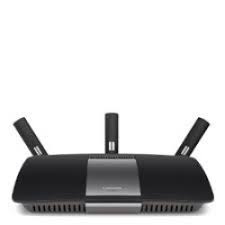Creating a successful trade show display requires many actions: choosing the right exhibit company, selecting your target audience, selecting design features, simplifying text, and more. However, avoiding certain activities can also contribute to more profitable custom exhibits. Avoiding these mistakes is an important part of creating the highest quality, most affordable display possible for your business. Here are a few of the most common mistakes exhibitors make that can impact the success.
Failing to Read the Exhibitor’s Manual
You should receive an exhibitor’s manual for every trade show at which you register. This manual is an exhaustive list of the rules and regulations that govern your time at the trade fair. For example, it should include the deadlines for renting equipment, the types of lighting that are (or are not) allowed at the show, the kind of technology that the event can support, and so forth. If you read it carefully, you should know everything you need to successfully exhibit at that show.
Unfortunately, many exhibitors fail to read this manual, out of boredom or a misplaced confidence that they already know all of the rules. The truth, however, is that each trade show has its own unique rules that can impact the design of your display booth. For example, rules about the height of your custom exhibit, the types of lighting allowed, and delivery deadlines can all impact when and how you design your display. Reading the exhibitor’s manual before you begin the design process with your exhibit company can equip you to make decisions that comply with your trade show’s rules.
Choosing the Wrong Sized Display
Another common error also occurs before the design process even begins. This error involves choosing the wrong sized display. For example, if you reserve one booth size and build another, you might end up with custom exhibits that simply do not fit. Alternatively, your booth space and display might match, but the size might not fit your needs. For instance, exhibits that are bigger than necessary can eat up so much of your budget that you have nothing left with which to design your large display. Plus, if you go too big, you risk having a display that looks empty because you simply do not draw enough visitors to make the space worth it.
Alternatively, small displays can leave your booth feeling overcrowded. And an overcrowded booth can discourage visitors who otherwise would have stopped by. Or, it can make you look insignificant if your competitors bring larger exhibits. Plus, while you are likely to save money with a smaller booth, you may find that a small booth does not fit your business’ needs if you happen to grow quickly over the course of a few years. The key is to select a booth size that meets your needs, gets your audience’s attention, and leaves you enough money to build a unique trade show display.
Failing to Plan Ahead
One of the most common mistakes made by exhibitors is failing to plan ahead. Just building a unique trade show display requires 6-8 weeks of construction. Fleshing out your vision and creating and refining a design take even longer. A good rule of thumb is to give yourself and your exhibit company 4 to 6 months to complete the process of creating custom trade show displays. Any less than this, and you might not get your display on time. In addition, a failure to plan ahead can mean missing deadlines at the trade show (such as for trade show equipment rental or delivery windows). Or, it might mean losing out on the lower rates for reservations, materials, and services that are available to people who request them ahead of time.
Failing to plan ahead can also result in a less effective custom trade show exhibit. For example, if you do not develop a marketing strategy and set goals for your display, it will be difficult to create a display that meets your trade show needs. Without set goals, an understanding of your target audience, and a focused message, you are unlikely to attract the leads you need to make your time at the trade show worthwhile. Planning both your marketing strategy and your display needs ahead of time can lead to a less expensive but more effective custom trade show exhibit.
Focusing on Cost Instead of Quality
Creating a unique trade show display on a budget can be a challenge, especially if your budget is small. That is why many exhibitors try to build their displays with the least expensive materials and the cheapest design services out there. They hope to achieve a successful trade show display without overspending.
Unfortunately, this strategy rarely works out. By using cheap materials and cheap design services, you risk getting what you pay for: sub-standard designs that wear out quickly or do not work the way they should.
Instead of making cost the most important element in your design decisions, consider making quality most important. This might mean that you have to build a smaller display or add fewer features. However, choosing quality materials and an experienced exhibit company does not mean having to give up on your budget. Instead, your exhibit company’s design services should be able to murr wife work with you to innovate less expensive solutions that do not compromise on quality.
Trade show display mistakes may be common, but they are not inevitable. If you can avoid them, you can save yourself time, money, and stress, both during the design process and during the trade show itself. If you read the exhibitor’s manual, choose the right sized display, plan ahead, and focus on quality instead of cost, you should end up with a beautiful, unique trade show display. By avoiding the pitfalls many other exhibitors fall into, you can enjoy a more profitable and less stressful time at your trade shows.

